Leonardo's birthplace in Anchiano
Divided between the actual Birthplace, arranged into three different rooms, and the adjacent farmhouse, the exhibition route invites visitors to discover the places and landscapes that first inspired Leonardo’s work.
Visit duration: 1 hour
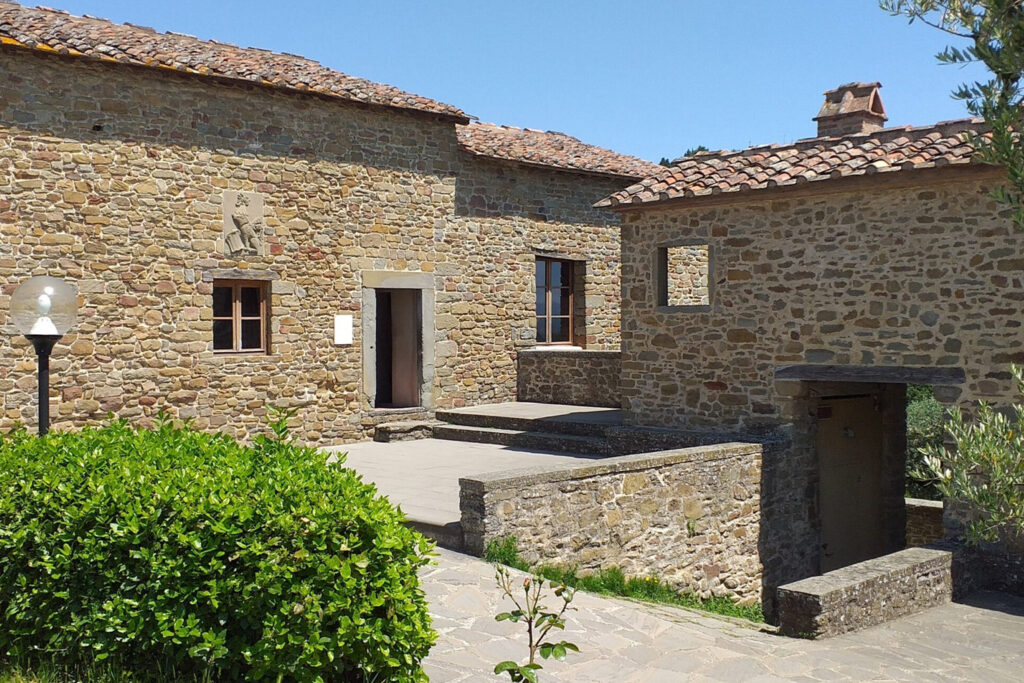
The history
Surrounded by the Montalbano hundred-year-old olive trees, in a landscape suspended in time, still very similar to the one Leonardo knew, Leonardo’s house in Anchiano is the symbol of the close relationship he had with his hometown. In this country house, still displaying the original coat of arms of the Da Vinci family, Leonardo was born on April 15th, 1452, love child of Ser Piero da Vinci and Caterina.
The ancient complex, whose existence is attested already in 1427, was the property of the da Vinci family for over 150 years. The tradition of the House of Anchiano as the birthplace of Leonardo is rooted in the centuries and became established definitively during the 1800s, so much so that, already in 1845 the historian and geographer Emanuele Repetti, to whom we owe the publication of the Dizionario geografico, fisico e storico della Toscana, wrote:
I wished to visit that house where, people say, that great man was born, so I went to Vinci and specifically in the Masetti del Ferrale estate where, in one of those houses in the Anchiano farm, he was born, although, since he was born illegitimate from a housemaid, we are left in doubt on whether his mother lived at that time in that house, or instead the family of Leonardo’s father, during the time when his first wife was alive.
The old mansion, which remained property of the Da Vinci family for over 150 years, as confirmed by the coat of arms that is still visible here, is part of the Houses of Memory Association, which gathers more than fifty historical houses of illustrious people.
A few years later, in 1872, the historian Gustavo Uzielli and the painter Telemaco Signorini were in Vinci in search of Leonardo’s memories. The publication 1872. Gita a Vinci is a real diary that collects not only the fruits of their investigations, but also testimonies and colorful stories, like the one that recalls Giuseppe Garibaldi’s stay in Vinci in 1867.
“Here is what Garibaldi did: at four in the morning he would get up, take a cold shower and, via Botanica, take a trip to Anchiano to Leonardo’s house to try to buy, he said: something of the genius of that great man […]”
A few decades later, in 1939, Emil Möller published the results of his research carried out at the State Archives of Florence, including the sensational discovery of the Annotation of Leonardo’s birth written by his grandfather Antonio da Vinci on the last page of the notarial register of his father. The document clarified once and for all the date and place of birth of Leonardo, who certainly came to light in Vinci, as evidenced by the name of the priest who baptized him and the witnesses at baptism.
But the question of the actual birthplace was rekindled: had Leonardo been born in the rural house of Anchiano or in the house that the Da Vinci family owned near the Castle of the Guidi? The heated dispute between Möller and Renzo Cianchi, librarian of the Leonardiana and tireless historian, lasted for years.
Until, in 1950, the owners of the Ferrale estate, the Rasini da Castelcampo counts, decided to donate the Casa di Anchiano to the Comune of Vinci, in order to create a museum dedicated to Leonardo. Major restorations followed, supervised by the architect Giulio Ulisse Arata under the supervision of the Monuments Superintendence.
Solemnly inaugurated on the occasion of the fifth centenary of the birth of Leonardo, on 15 April 1952, in the presence of the then President of the Republic Luigi Einaudi and Prime Minister Alcide De Gasperi, the House of Anchiano thus became the place of memory par excellence of the link between Vinci and Leonardo.
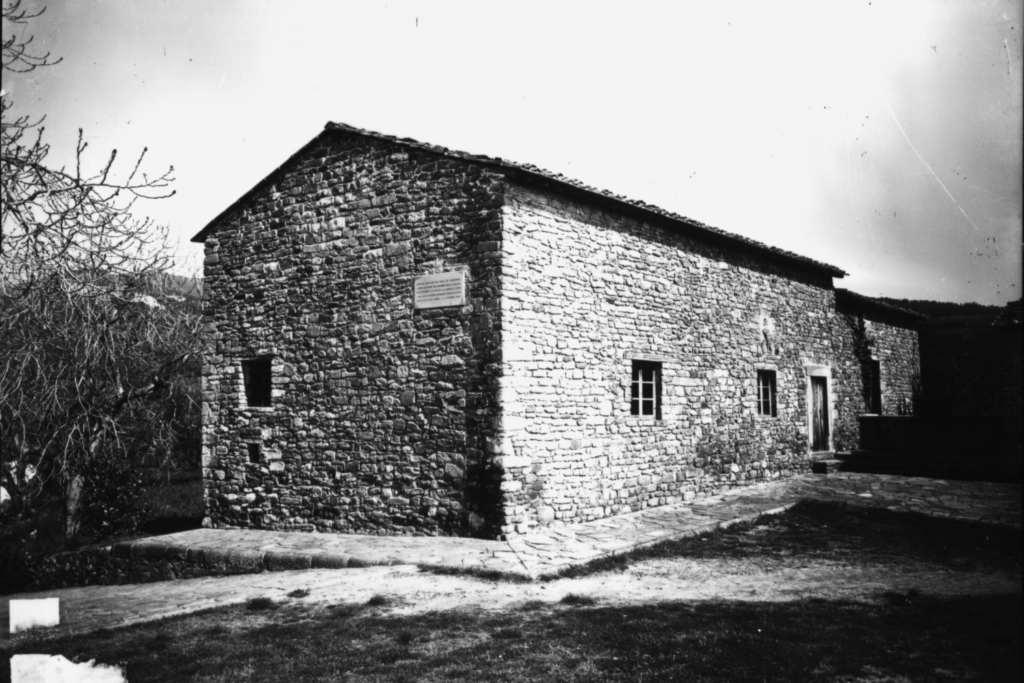
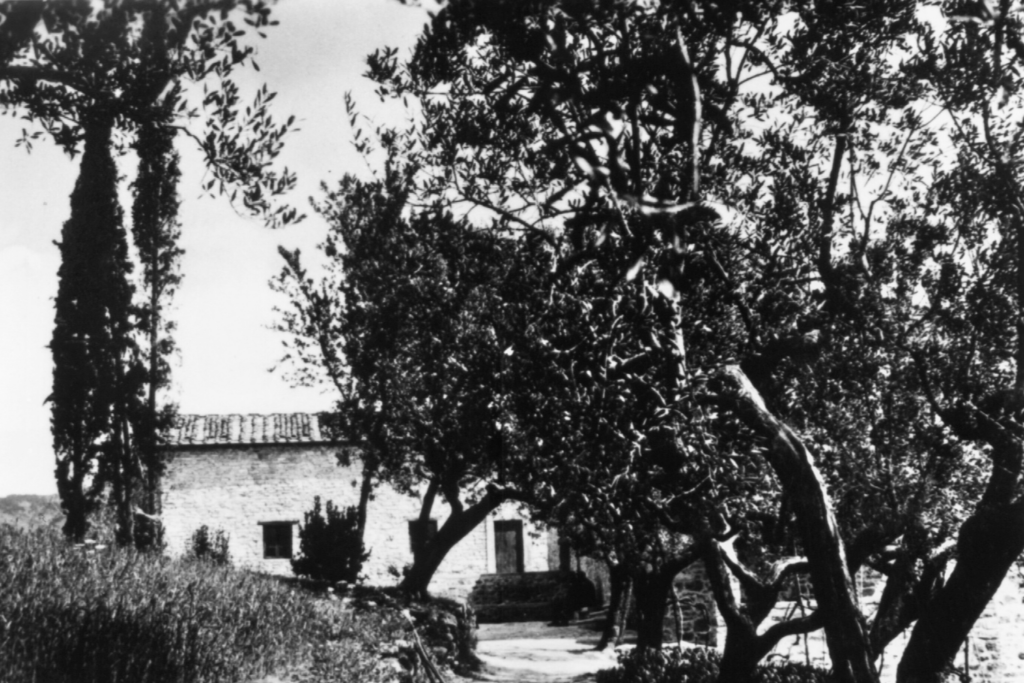
The exhibition route
In the home, the audio-video narration Leonardo in Vinci: A Genius Tells His Story uses modern 3D technology to make Leonardo and his most personal, intimate, less-known universe alive again. The relationship between Leonardo and the Vinci and Montalbano areas, in particular, gains new life thanks to the several drawings that attest to Leonardo’s frequent visits to these places. A life-size hologram, mixing video, theater and documentary, gives voice to an old and tired Leonardo who, from his last home in Amboise, looks back to the past to recount his relationships and studies, and the events that connected him to this land.
On the other hand, the interactive multimedia app Leonardo Touch presents the pictorial and graphic works of Leonardo, following several research itineraries to interact with the drawings and paintings, so as to discover every detail in them.
The exhibition also includes a section entitled Leonardo’s Last Journey, where a model donated to the museum by the Italian Embassy in Paris reproduces the route taken by Leonardo in 1516 during his journey from Rome to his last residence, the castle of Clos Lucé in Amboise.
A special video dedicated to the Battle of Anghiari tells the story of Leonardo’s most famous unfinished work, which was meant to decorate a wall of the Grand Hall of Palazzo Vecchio, known today as the Salone dei Cinquecento. Through images and 3D digital reconstructions, the video illustrates how the hall looked at the time of Leonardo and how it changed over the centuries, with a particular focus on the memory of that fragment of “fresco” which Leonardo began to paint but soon had to abandon due to a flaw in the experimental painting technique he was using.
Special attention is also given to the many copies created by contemporary artists, which—thanks to the video—bring back the extraordinary expressive power with which Leonardo envisioned his dynamic and dramatic depiction of a battle.
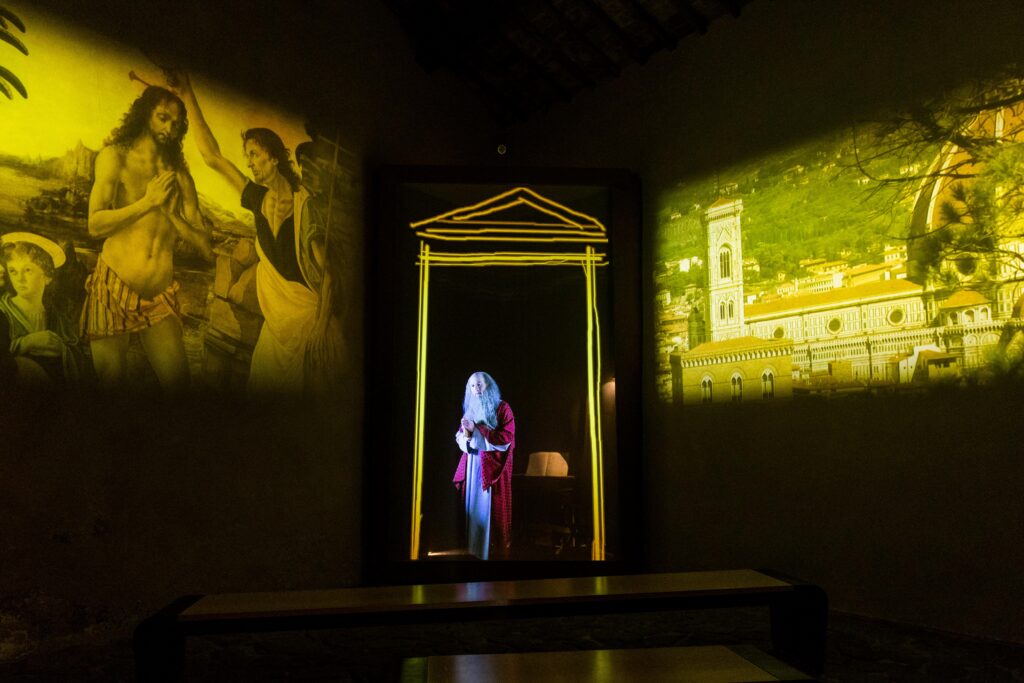
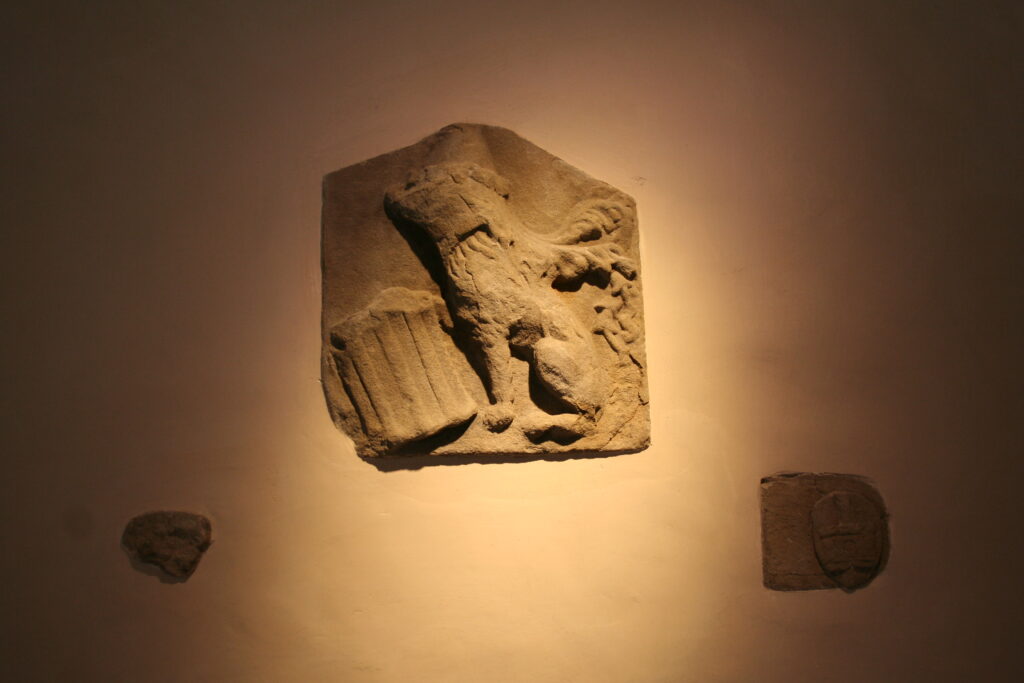
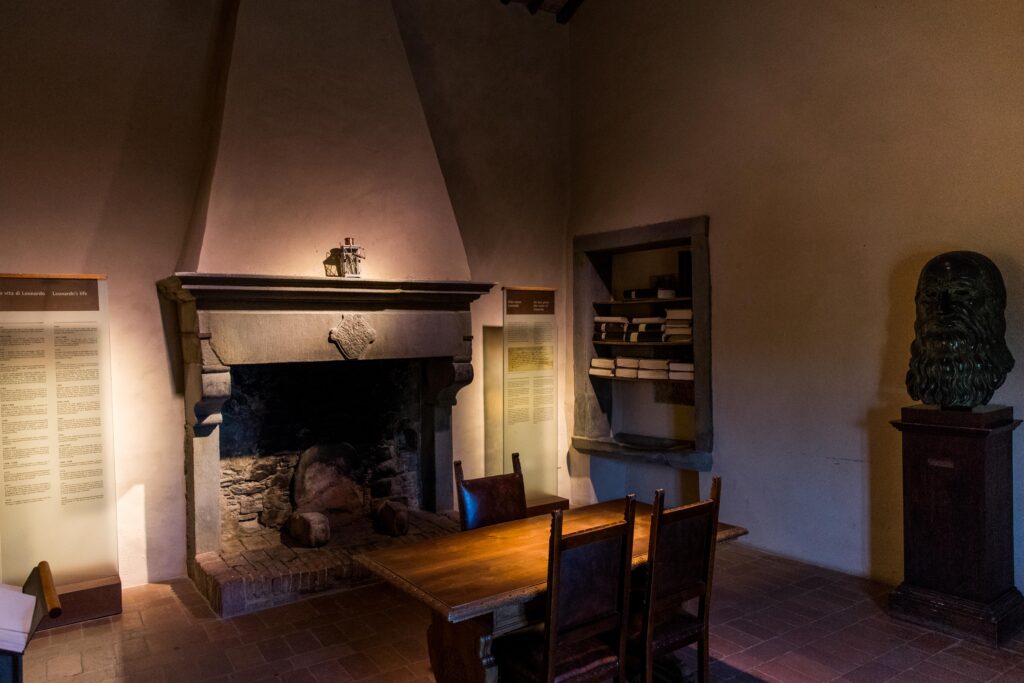
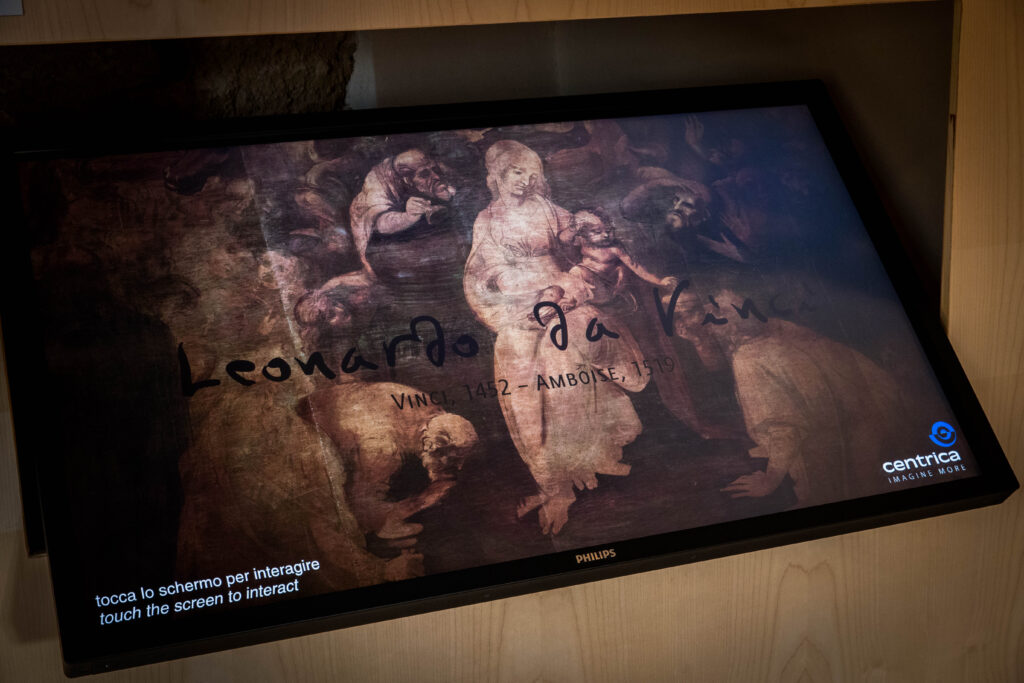
The Green Road
The countryside surrounding Vinci and the House in Anchiano are undoubtedly the first great source of inspiration for young Leonardo. The wooded slopes of Montalbano which, today like then, transform first into olive groves and then into vineyards, are unique to this landscape, background to the childhood of the Genius. To enter this nature means to travel back in time and to find yourselves in the young artist’s shoes when he first started to empyrically observe the nature and its elements, and to follow into his footsteps.
The path begins at the Strada Verde (Green Road), itinerary n. 14, the 2 km path that connects Vinci to Leonardo’s house. The itinerary explores the typical Tuscan countryside, with its distinctive terracing and fields of olive trees and vineyards, and it retraces an old path, known in the 1800s as Via Botanica. This same road was usually walked by Giuseppe Garibaldi, leaving the Fattoria del Ferrale, when he was a guest of Count Masetti in 1867. As noted by historian Gustavo Uzielli, the Hero of the Two Worlds used to “wake up at 4 in the morning, take a cold shower and then, through the Via Botanica, walked to Leonardo’s House in Anchiano to gather some of that great man’s Genius for himself”.
Today, the Strada Verde is a very evocative hiking trail for those who want to reach Leonardo’s House and enjoy the beautiful views of Vinci and the Tuscan countryside, and it is walked every year by thousands of visitors in search for the origins of the Genius. Along this path, halfway between Vinci and Anchiano, you can find a fork leading to the 1400s pescaia, used for centuries to regulate the water flow for the canal which powers the Mulino della Doccia near Vinci. A map of that same Mill is sketched by Leonardo in an early 1500s drawing (Codex Atlanticus, 765r, Milan, Biblioteca Ambrosiana).
Information
Path’s lenght: 1800 mt
Type of path: foot, bike
Road surface: dirt road, with some paved sections
Difficulty: easy, medium declivity